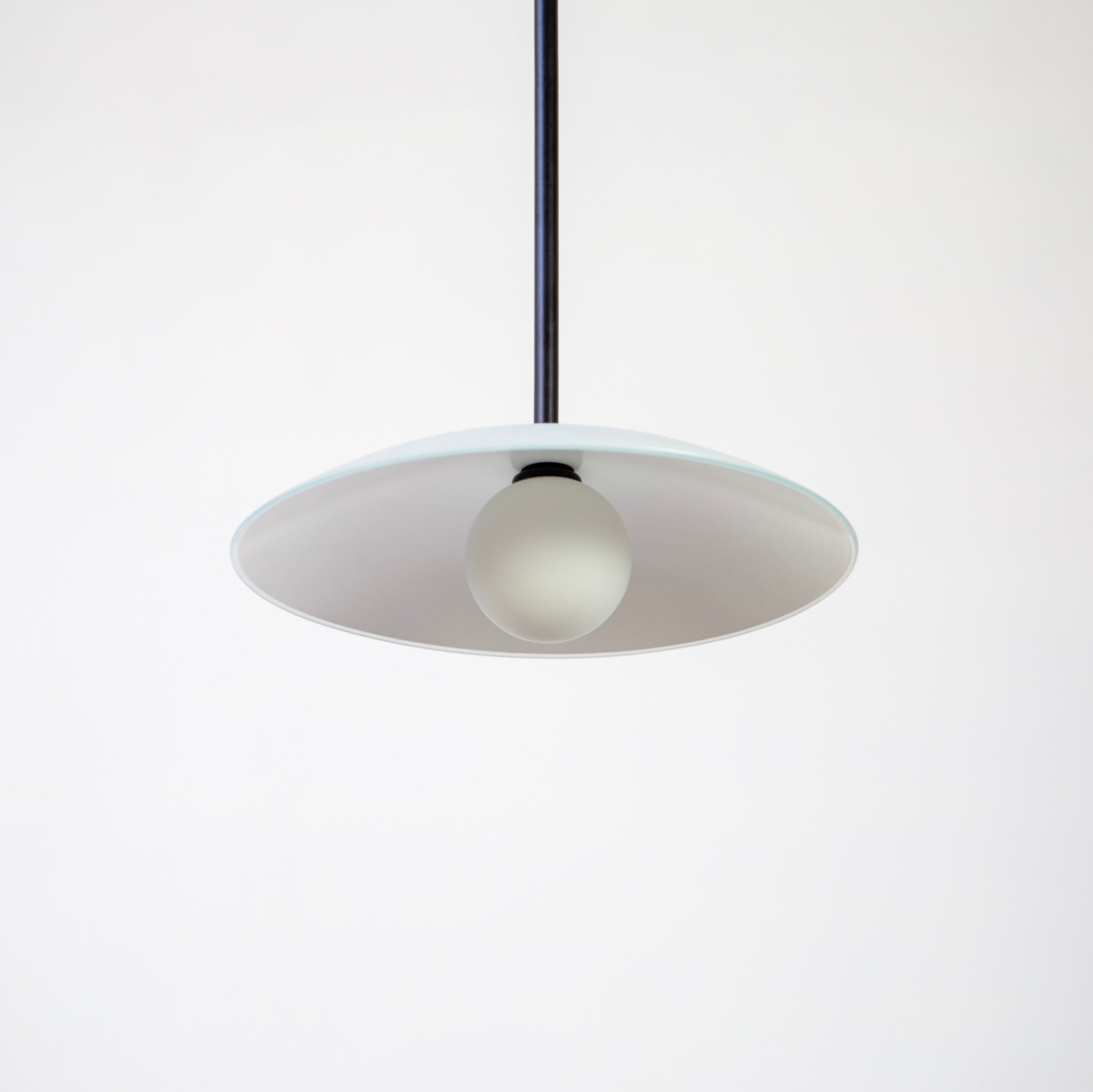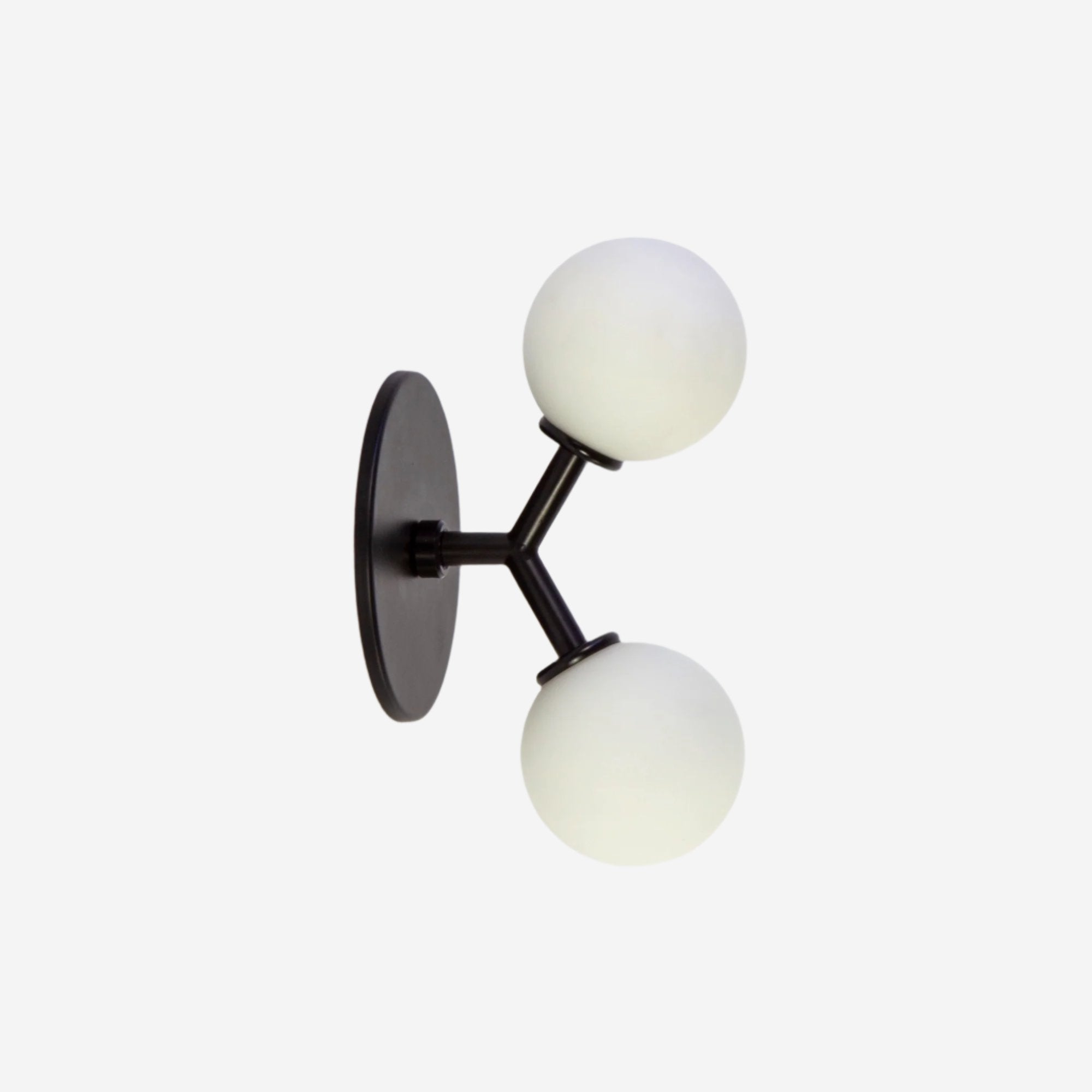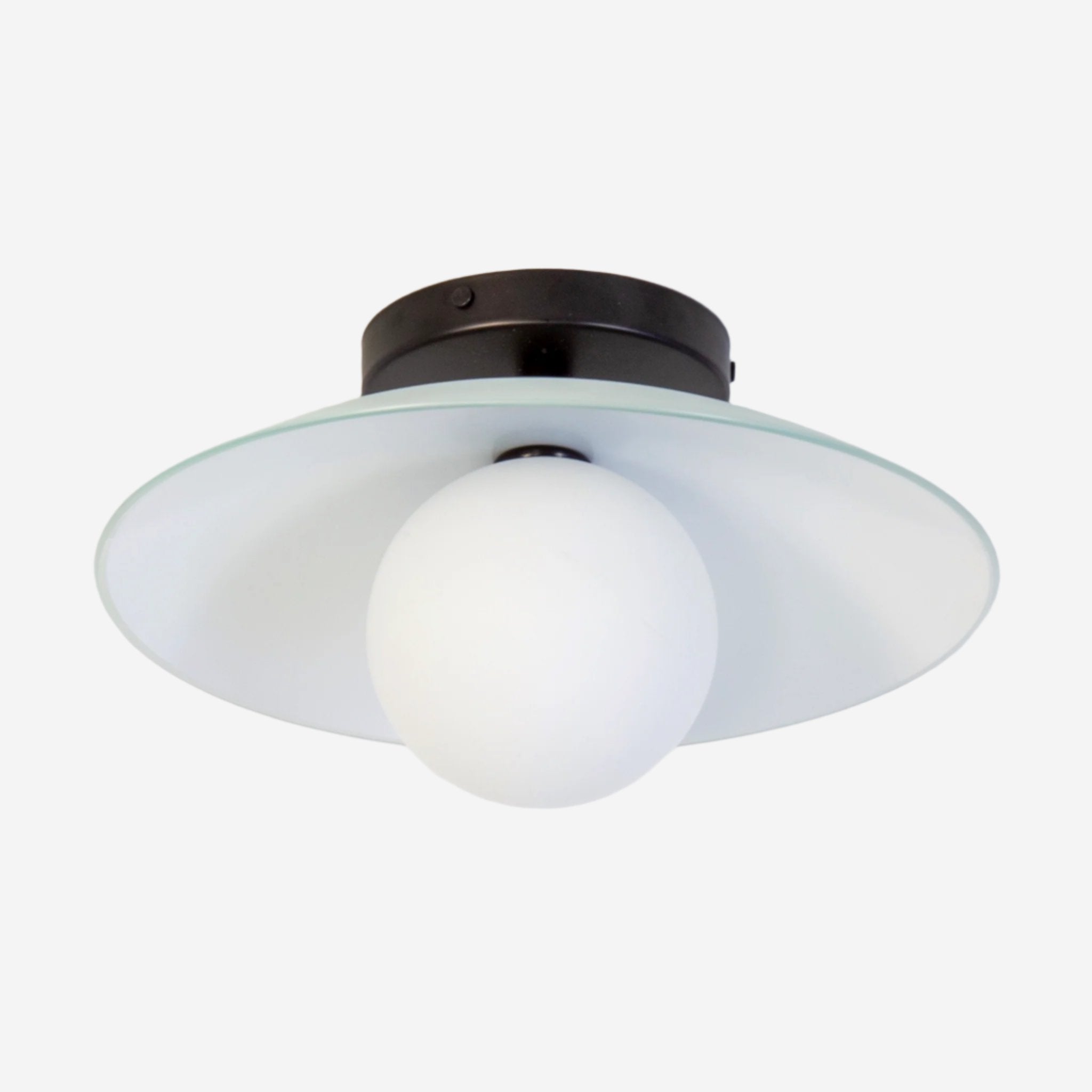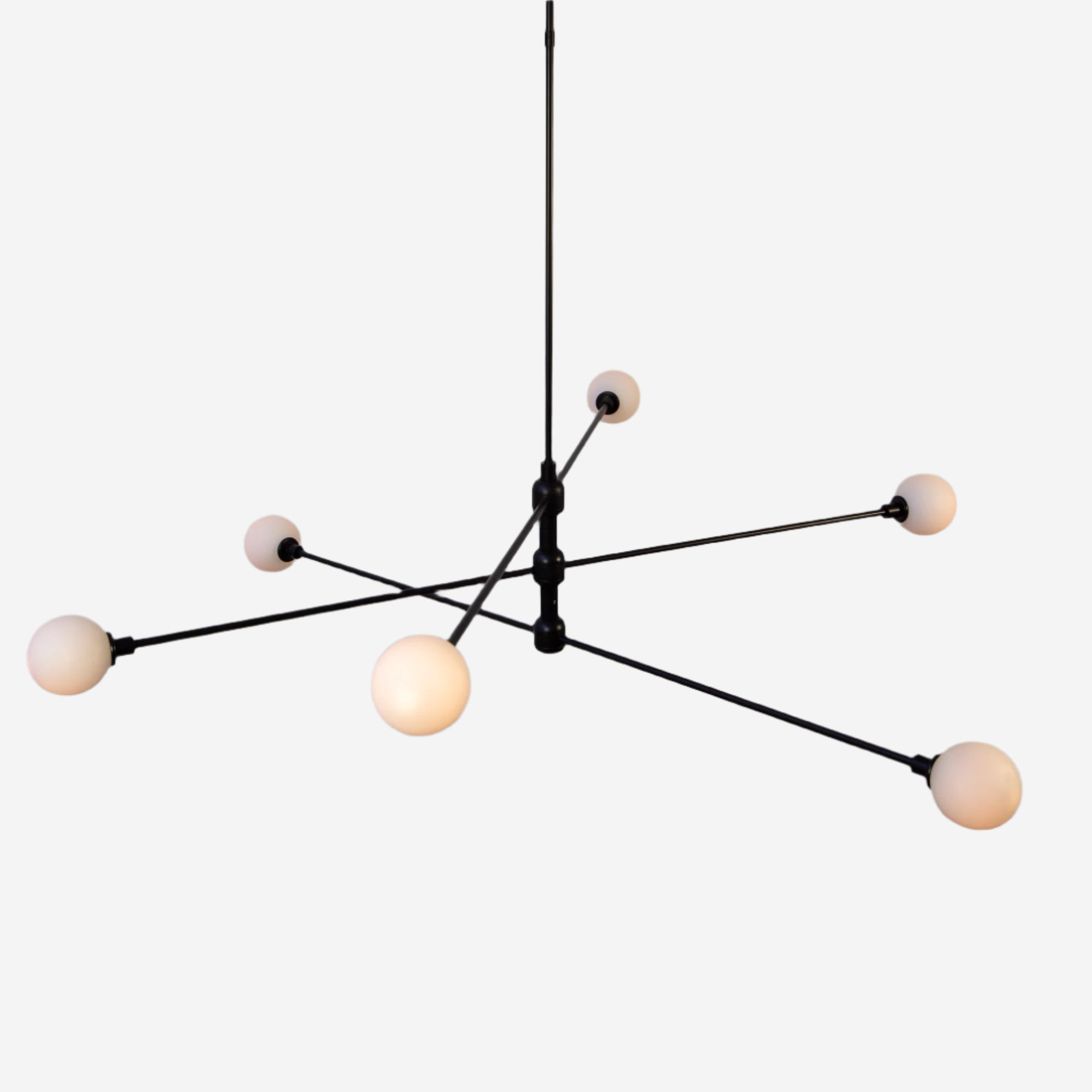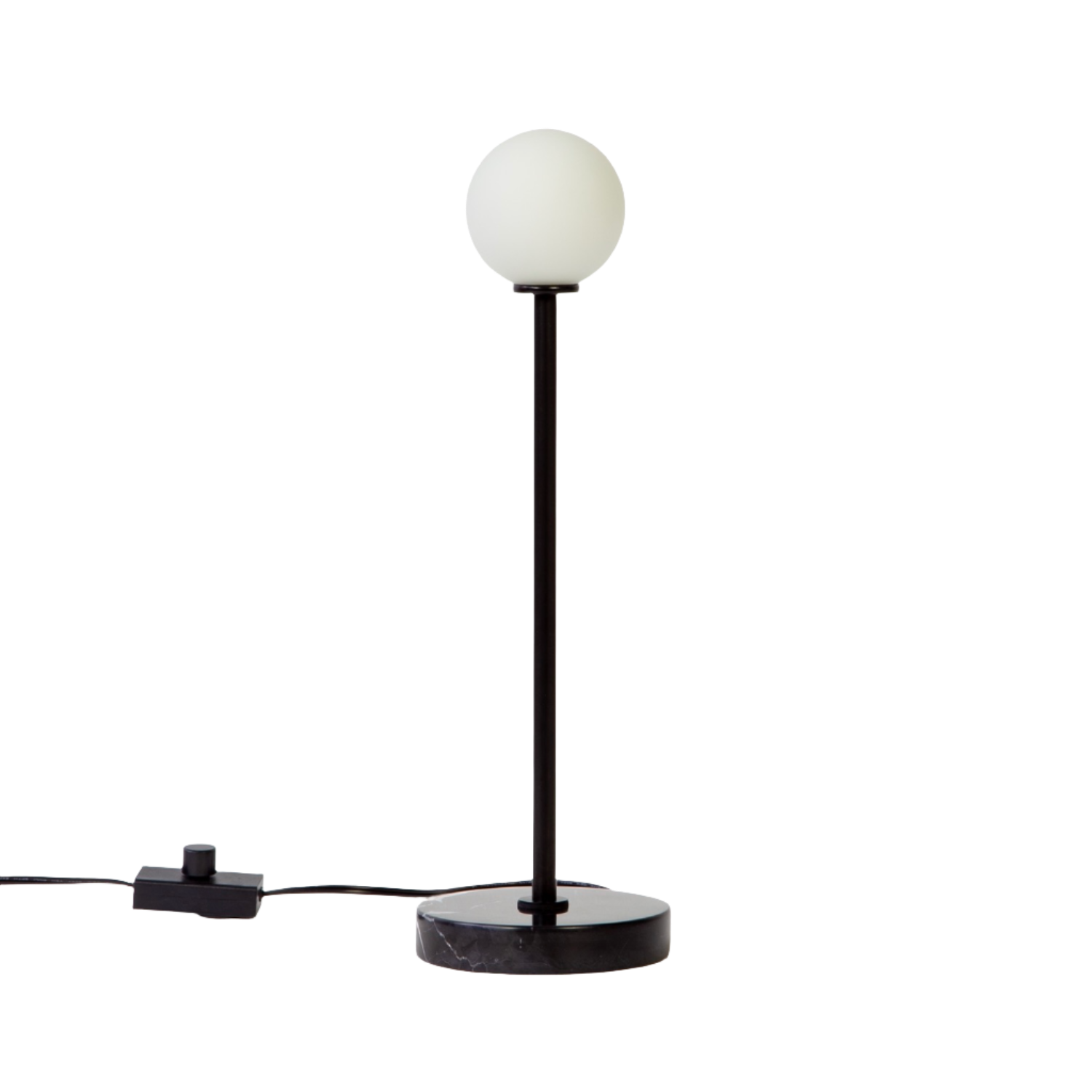
Low Profile Ceiling Lights for Spaces Big on Style, Short on Height
Not every ceiling is generous. Some sit low, a little closer, which means a pendant or chandelier isn’t always the answer. That’s when flush mounts earn their place. Low profile ceiling lights stay tight to the surface, opening up the room while still shaping the glow. Not a compromise. Just a shift in proportion. These four designs show how simple forms can hold a ceiling with quiet confidence.
Globe Flush Mount
An orb, pared back. The Globe Flush Mount (pictured above in nickel) offers a round, steady glow, tucked neatly against the ceiling. It doesn’t push or pull, it just holds the light where you need it. Perfect in a hallway, entry, or smaller bedroom that still deserves a bit of presence. Simple, balanced, always easy.

Hive Flush Mount
A little geometry overhead. The Hive Flush Mount builds depth through subtle ridges, stacked into a form that feels sculptural without taking space. It changes how the ceiling reads, adding rhythm without height. Proof that low profile lights can stay minimal while carrying character.

Dish Flush Mount
Wide and calm. The Dish Flush Mount sets its glow inside a shallow glass shade, spreading light evenly without cluttering the ceiling line. It sits well over a dining table or in a kitchen, places where light needs reach but not weight. Streamlined, deliberate, quietly dramatic.

Dome Flush Mount
Soft curve, softer glow. The Dome Flush Mount rounds off the ceiling with a gentle drop, sending light down in an easy, approachable way. A shape that works just as well in a bathroom as it does in a living room. Minimal, but with enough curve to keep it warm.
The Low Down
Low ceilings are part and parcel with a number of different types of spaces; basement remodels, attic spaces, older apartments, etc. But flush mounts don't have to be a workaround; you can keep things minimal - or ratchet up the drama. Low profile here doesn’t mean less, it just means thought through for tighter spaces.
Because style isn’t measured in ceiling height. It’s in how the lights work in the space.
